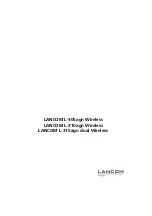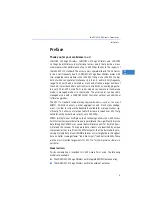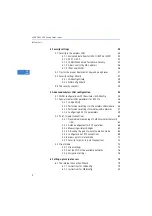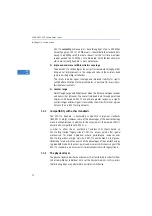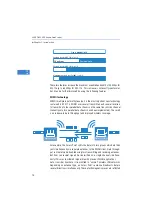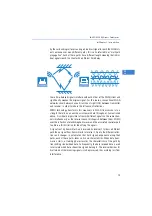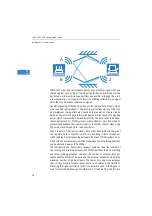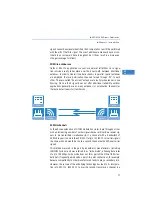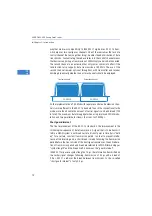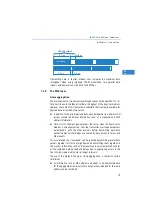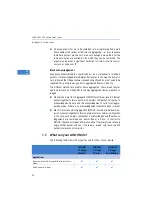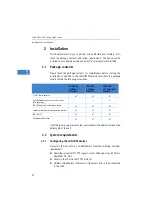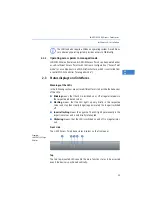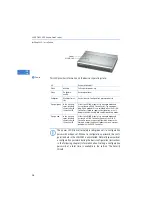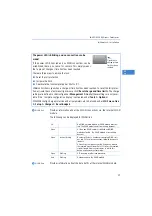
LANCOM L
-
300 Access Point series
Chapter 1: Introduction
12
EN
802.11n
currently
achieve a gross data throughput of up to 300 Mbps
(in reality approx. 120 to 130 Mbps net) – theoretically the standard defi-
nes up to 600 Mbps with four data streams. For the first time, maximum
speeds exceed the 100 Mbps of cable-based Fast Ethernet networks,
which are currently standard in most workplaces.
Improved and more reliable wireless coverage
The new 802.11n technologies do not just increase date throughput but
bring about improvements in the range and reduce the wireless dead
spots in existing a/b/g installations.
This results in better signal coverage and improved stability for signifi-
cantly better utilization of wireless networks, in particular for users in pro-
fessional environments.
Greater range
Data throughput generally decreases when the distance between receiver
and transmitter increases. The overall improved data throughput allows
wireless LANs based on 802.11n to achieve greater ranges, as a signifi-
cantly stronger wireless signal is received by the Access Point over a given
distance than in 802.11a/b/g networks.
1.2.2
Compatibility with other standards
The 802.11n standard is backwardly compatible to previous standards
(IEEE 802.11a/b/g). However, some of the advantages of the new technology
are only available when, in addition to the access points, the wireless LAN cli-
ents are also compatible with 802.11n.
In order to allow the co-existence of wireless LAN clients based on
802.11a/b/g (called "legacy clients") 802.11n access points offer special
mechanisms for mixed operation, where performance increases over
802.11a/b/g are not as high. Only in all-802.11n environments is the "green-
field mode" used, which can exploit all the advantages of the new technology.
In greenfield mode both access points and wireless LAN clients support the
802.11n standard, and access points reject connections with legacy clients.
1.2.3
The physical layer
The physical layers describes how data must be transformed in order for them
to be transmitted as individual bits over the physical medium. In this process
the following steps are performed in a wireless LAN device:


